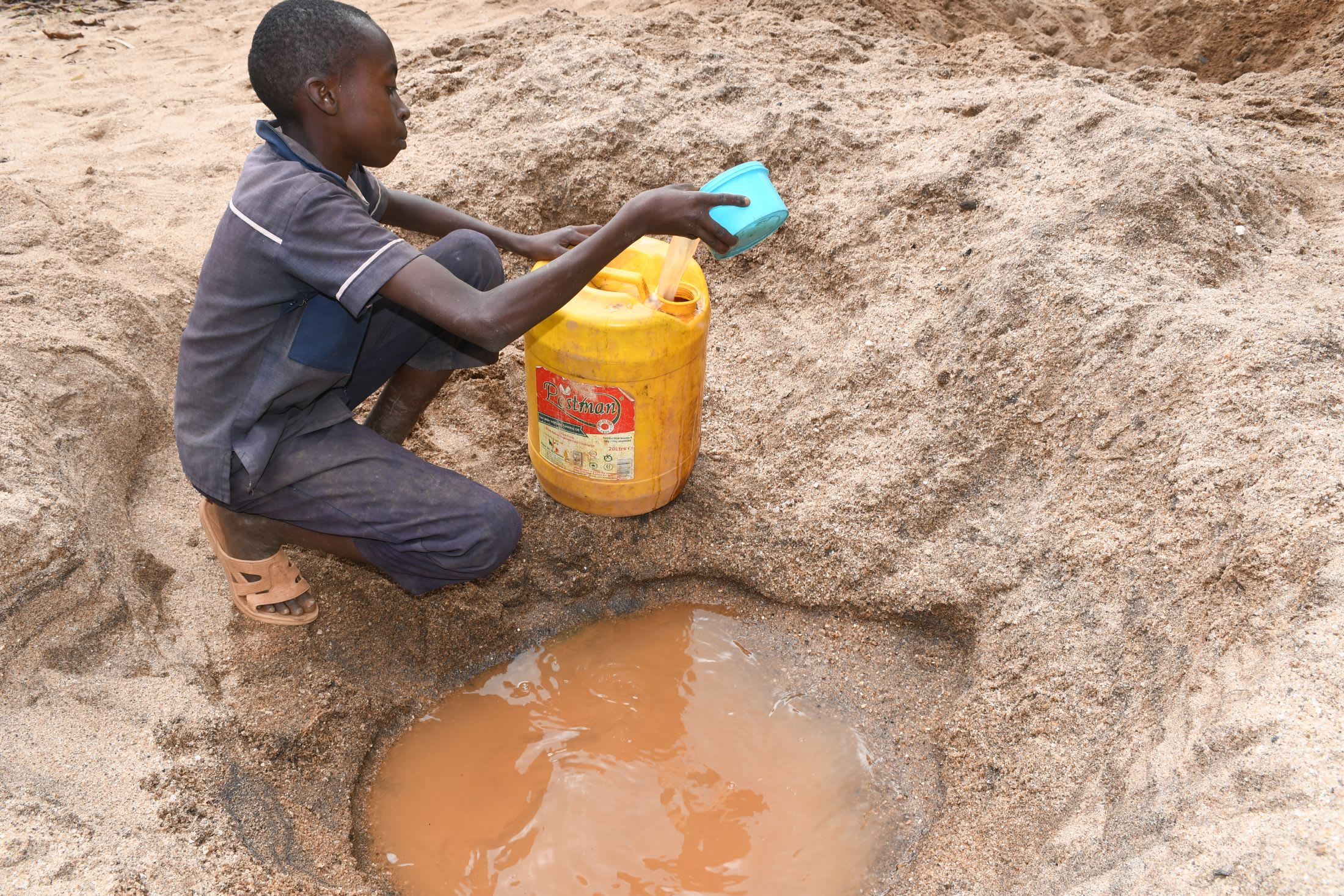It takes the 1,200 community members living in the Mwandalwa Community an average of two hours to collect water from the closest dug well where they can find safe water. This is not a feasible solution for most in the community, so the majority of people choose to collect water from a scoop hole dug into a riverbed, which takes forty minutes on average instead.
But understandably the scoop hole presents multiple challenges, with the primary one being the water people collect is contaminated.

Children waiting to collect water from the scoop hole.
"The scoop hole is not protected and is easily contaminated through animal and human activity. The water is not clear with a saline taste and foul odor. Due to drinking water from contaminated sources like scoop holes, the residents often contract infections like typhoid, amoeba, and dysentery," shared Field Officer Alex Koech.

Contaminated water is not the only issue. It is also a time-consuming, labor-intensive task that steals people's energy and leaves them little time for other important things in their daily lives.
"Women have to wake up as early as 5:00 am to fetch water and return home in the afternoon. This consumes most of their time and energy; thus, [they] cannot fully participate in household chores, hygiene, herding livestock, or preparing their lands. The school-going children also spend [most] of their evenings and weekends fetching water for the family, which has negatively impacted their academic performance in school," Alex continued.

Mwangangi scooping water.
Twelve-year-old Mwangangi is responsible for collecting water for his family, a heavy burden to bear for someone so young.
"The area is very hilly, and the water points are located far away. I feel tired because of the steep terrain that I have to climb when carrying water or using a donkey," said Mwangangi.
But getting to the waterpoint is not the only hassle for him; once he arrives, he finds that he often has to wait to collect water, wasting even more time.
"We experience very little rainfall in our area and a lot of droughts. Sometimes, people quarrel about who should fetch water first. In some cases, you might find an older person who may want to fetch water, and they jump the queue because they feel you are a child and you can wait longer. I get late when going to school because I have to fetch water to carry to school," Mwangangi said.

When asked how he would spend his time if he didn't have to use so much of it collecting water, he said, "I would spend my time playing with friends or doing homework."
Mwangangi has dreams, but to accomplish them, he needs access to clean, safe water. "When I grow up, I want to be an engineer."
Solving the water crisis in this community will require a multifaceted system that will work together to create a sustainable water source that will serve this community for years to come.
Note: Our proposed water point can only serve 300 people per day. We are working with the community to identify other water solutions that will ensure everyone has access to safe and reliable drinking water.
Steps Toward a Solution
Our technical experts worked with the local community to identify the most effective solution to their water crisis. Together, they decided to construct a dug well and sand dam.
Dug Well Near A Sand Dam
Once a sand dam is installed and has time to mature by gathering sand and silt, groundwater increases significantly in the entire area surrounding the project. This provides a reliable source of groundwater that wasn’t possible before. As a result, wells can be constructed to take advantage of the water stored and filtered in the collected sand.
During construction, we build a platform for the well and attach a hand pump. The community gains a safe, enclosed water source capable of providing approximately five gallons of water per minute.
This dug-well will be connected to a sand dam to obtain water.
Community Education & Ownership
Hygiene and sanitation training are integral to our water projects. Training is tailored to each community's specific needs and includes key topics such as proper water handling, improved hygiene practices, disease transmission prevention, and care of the new water point. Safe water and improved hygiene habits foster a healthier future for everyone in the community. Encouraged and supported by the guidance of our team, a water user committee representative of the community's diverse members assumes responsibility for maintaining the water point, often gathering fees to ensure its upkeep.

 Protected Dug Well
Protected Dug Well
 Rehabilitation Project
Rehabilitation Project




















